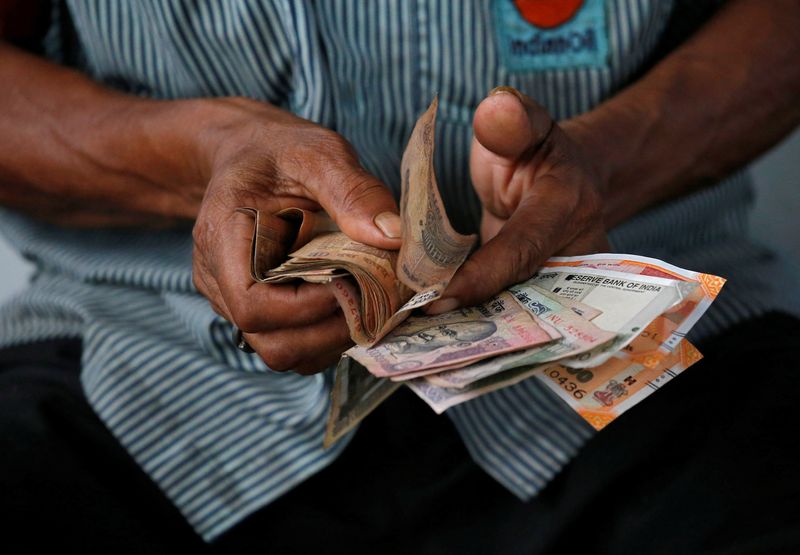Forex
Rupee ends nearly flat as cenbank absorbs importers’ dollar demand

By Nimesh Vora
MUMBAI (Reuters) – The Indian rupee ended at its record closing low on Thursday, but was little changed versus the previous session, as the central bank’s intervention helped negate the incessant dollar demand from importers.
The rupee ended at 83.9825 to the U.S. dollar compared to 83.9650 in the previous session. Intraday volatility was muted, similar to the activity in recent sessions, with the local currency trading in a 2 paisa range.
The Reserve Bank of India yet again sold dollars to support the rupee, which prevented it from slipping past the crucial 84 level.
“The RBI was at it through most of today’s session. There is obviously just no way of knowing when the RBI will decide that it has had enough of defending 84,” a currency trader at a bank said.
The rupee needed the central bank’s help even on a day when the dollar was weak across the board.
Weak U.S. job opening data pushed the odds of a 50-basis-point Federal Reserve rate cut this month higher to 45%, prompting traders to dump the dollar.
“The rupee today completely disregarded the dollar’s decline, like it has been doing for a number of weeks now,” Kunal Kurani, associate vice president at Mecklai Financial said.
“Now let’s see whether Friday’s (U.S.) job report will change things.”

August’s U.S. non-farm payrolls data is being considered the most important jobs report in a long time in the wake of comments by Federal Reserve Chair Jerome Powell that further weakening in the labour market will not be welcome.
Friday’s report will decide whether the Fed will cut rates by 25 bps or 50 bps at the Sept 17-18 meeting. Right now, the futures market indicates that it is a toss-up.

 Forex3 years ago
Forex3 years agoForex Today: the dollar is gaining strength amid gloomy sentiment at the start of the Fed’s week

 Forex3 years ago
Forex3 years agoUnbiased review of Pocket Option broker

 Forex3 years ago
Forex3 years agoDollar to pound sterling exchange rate today: Pound plummeted to its lowest since 1985

 Forex3 years ago
Forex3 years agoHow is the Australian dollar doing today?

 Cryptocurrency3 years ago
Cryptocurrency3 years agoWhat happened in the crypto market – current events today

 World3 years ago
World3 years agoWhy are modern video games an art form?

 Commodities3 years ago
Commodities3 years agoCopper continues to fall in price on expectations of lower demand in China

 Economy3 years ago
Economy3 years agoCrude oil tankers double in price due to EU anti-Russian sanctions



























